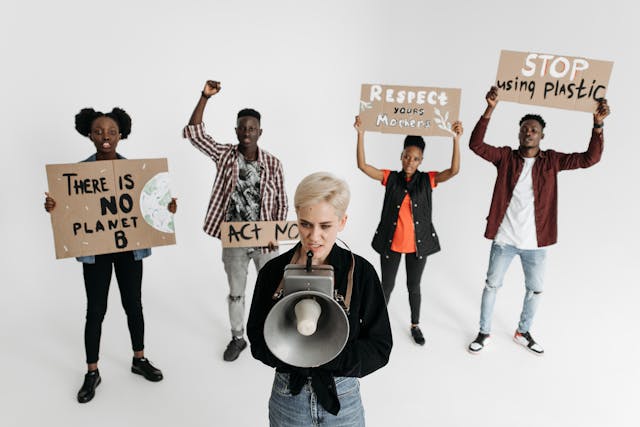10 Sustainable Housing Examples to Learn From
In 2023, a comprehensive review published in ScienceDirect revealed that substituting conventional building materials with mass timber can reduce construction phase emissions by up to 69%, equating to an average reduction of 216 kg CO₂e per square meter of floor area. This significant finding reflects the transformative potential of sustainable building practices in mitigating climate change.
As urban populations increase and the demand for housing intensifies, the construction industry faces mounting pressure to adopt environmentally responsible methods. Innovative housing projects worldwide are rising to this challenge, integrating renewable energy sources, eco-friendly materials, and community-centric designs. These developments not only aim to reduce carbon footprints but also to enhance the quality of life for residents.
This article looks into exemplary sustainable housing initiatives that serve as blueprints for future developments. By examining these projects, we can glean insights into effective strategies for creating resilient, eco-conscious communities that harmonise with our planet’s needs.

In This Article
- 1. Schoonschip, Amsterdam, Netherlands
- 2. Stockholm Wood City, Sweden
- 3. UN17 Village, Copenhagen, Denmark
- 4. BedZED, London, United Kingdom
- 5. Solar Settlement at Schlierberg, Freiburg, Germany
- 6. The Phoenix, Lewes, United Kingdom
- 7. Aldinga Net Zero Carbon Housing Estate, South Australia
- 8. Barratt Developments’ Passivhaus Homes, London, United Kingdom
- 9. Green Star-Rated Apartments, Australia
- 10. Earthship Biotecture, Taos, New Mexico, USA
- Conclusion: Actionable Insights for Sustainable Living
1. Schoonschip, Amsterdam, Netherlands
Schoonschip is a pioneering floating community in Amsterdam, designed to adapt to rising sea levels. Comprising 46 households on 30 floating homes, this neighbourhood integrates solar panels, heat pumps, and smart grid technology to optimise energy use.
Located in Amsterdam’s Buiksloterham district, Schoonschip is more than just a collection of homes—it’s a vibrant, self-sustaining neighbourhood that harmonises urban living with nature. Each dwelling is equipped with solar panels and heat pumps that draw warmth from the canal water, significantly reducing reliance on fossil fuels. A smart grid interconnects all homes, enabling residents to share surplus energy efficiently, fostering a sense of communal responsibility and resilience.
The community’s commitment to sustainability extends beyond energy. Wastewater is managed through separate streams for grey and black water, with plans to convert black water into energy via a floating digester. Green roofs cover at least one-third of each home, enhancing insulation and promoting biodiversity.
Social cohesion is a cornerstone of Schoonschip. Residents share electric vehicles, cargo bikes, and even meals, fostering a tight-knit community. A shared WhatsApp group facilitates the exchange of goods and services, reinforcing a culture of mutual support.
Initiated in 2010 by Marjan de Blok, a Dutch TV director inspired by sustainable living, Schoonschip serves as a model for climate-resilient urban development. Its innovative approach has attracted global attention, offering valuable insights for cities worldwide grappling with the challenges of climate change and urbanisation.
2. Stockholm Wood City, Sweden
Stockholm Wood City, located in the Sickla district, is an ambitious project by Atrium Ljungberg that plans to integrate 2,000 homes and 7,000 office spaces within a 250,000-square-meter area, all crafted from sustainable timber.
Choosing wood over traditional materials like concrete and steel isn’t merely aesthetic. Mass timber construction can reduce carbon emissions during the building phase by up to 69%, according to a study in ScienceDirect. Moreover, wood acts as a carbon sink, storing CO₂ throughout the building’s lifespan.
Beyond environmental benefits, wooden structures offer enhanced well-being. Research indicates that such environments can improve air quality, reduce stress, and boost productivity. The design incorporates green roofs, ample natural light, and communal spaces, fostering a sense of community and connection to nature.
Energy efficiency is also central to the project. Plans include rooftop solar panels and geothermal heating systems, aiming for a self-sustaining energy model. This approach not only reduces reliance on external power sources but also aligns with Sweden’s broader sustainability goals.
3. UN17 Village, Copenhagen, Denmark
UN17 Village in Ørestad, Copenhagen, is a groundbreaking project aiming to meet all 17 United Nations Sustainable Development Goals (SDGs) within a single urban development. This initiative integrates renewable energy, green spaces, and social inclusivity, setting a new standard for holistic, sustainable living.
Spanning 35,000 square meters, the village comprises five distinct buildings designed to foster community and environmental responsibility. Each building incorporates features like solar panels, rainwater harvesting systems, and shared communal spaces to encourage interaction among residents. The development emphasises biodiversity, with green roofs and native plantings enhancing urban ecology.
Social inclusivity is central to UN17 Village’s design. Housing options cater to diverse demographics, including families, singles, and seniors, promoting a mixed and vibrant community. Ground floors host communal areas such as dining halls and workshops, facilitating social engagement and shared experiences.
Health and well-being are prioritised through the use of non-toxic building materials, natural lighting, and ventilation systems that ensure high indoor air quality. The village also offers spaces for physical activity and relaxation, contributing to residents’ overall wellness.
As of 2024, two buildings are completed, with approximately 200 residents moved in, and the remaining structures are expected to be finished within the year. Upon completion, UN17 Village will house over 1,100 residents, exemplifying a scalable model for sustainable urban development.
4. BedZED, London, United Kingdom
Located in Hackbridge, South London, the Beddington Zero Energy Development—affectionately known as BedZED—was completed in 2002. BedZED was the UK’s first large-scale eco-village, designed to minimise environmental impact while fostering a strong sense of community.
The homes here are thoughtfully constructed with thick insulation and triple-glazed windows, significantly reducing the need for heating. Solar panels and a biomass combined heat and power system provide renewable energy, cutting electricity consumption by 25% compared to the UK average.
Water conservation is integral to BedZED’s design. Innovations like dual-flush toilets, aerated taps, and a reed bed filtration system for recycling greywater have led to a 50% reduction in mains water use.
Transportation is reimagined here. BedZED introduced the UK’s first residential car club, reducing car ownership and promoting shared, sustainable mobility. The development’s layout encourages walking and cycling, with pedestrian-friendly streets and ample green spaces.
Community is at the heart of BedZED. Shared gardens, communal spaces, and a mix of housing options—from private ownership to social rent—create a diverse and connected neighbourhood. Residents often speak of the strong bonds formed here, attributing it to the design that encourages interaction and shared responsibility.
5. Solar Settlement at Schlierberg, Freiburg, Germany
Located in Freiburg, Germany, the 59-home Solar Settlement at Schlierberg, designed by architect Rolf Disch, embodies the PlusEnergy concept, where each home generates more energy than it consumes.
Constructed between 1999 and 2006, the homes utilise eco-friendly materials, including locally sourced wood, and are designed with south-facing orientations to maximise solar gain. High-quality insulation and triple-glazed windows ensure minimal energy loss. As a result, residents benefit not only from reduced utility bills but also from the opportunity to feed surplus energy back into the grid, effectively turning their homes into energy producers. This approach has proven highly effective, with average households generating an energy surplus each year.
The community’s design also emphasises quality of life. A car-free environment promotes safety and tranquillity, while shared green spaces encourage neighbourly interaction. Additionally, the adjacent Sun Ship building provides convenient access to shops and services, further enhancing the residents’ experience.
6. The Phoenix, Lewes, United Kingdom
Set on a 7.9-hectare former industrial site within the South Downs National Park, The Phoenix in Lewes, East Sussex, is a development that aims to transform a neglected area into a thriving, eco-friendly community.
The project plans to deliver 685 energy-efficient homes, with 30% designated as affordable housing, including options tailored to local income levels. These homes will primarily use sustainable timber and innovative materials like hempcrete, significantly reducing environmental impact.
But the Phoenix is more than just housing. It’s designed to prioritise people over cars, featuring pedestrian-friendly pathways, shared gardens, and communal spaces like a low-cost canteen, health centre, and creative workspaces. A new river walk along the River Ouse will connect residents to nature and the broader community.
The development also emphasises sustainability through renewable energy sources, on-site recycling, and urban farming initiatives. By incorporating these elements, The Phoenix aims to foster a sense of belonging and well-being among its residents.
Supported by the local community and led by the sustainable development company Human Nature, The Phoenix represents a forward-thinking approach to urban living. Construction is set to begin in 2025, with the first homes available by 2027 and full completion expected by 2030.
7. Aldinga Net Zero Carbon Housing Estate, South Australia
Located in the heart of South Australia’s coastal town of Aldinga, this $400 million initiative—spearheaded by Villawood Properties in collaboration with the South Australian Government—aims to deliver over 800 homes on a 45-hectare site adjacent to Aldinga Payinthi College.
Central to this development is a commitment to sustainability and community well-being. At least 25% of the homes are designated as affordable, ensuring inclusivity for a diverse range of residents. Approximately 200 homes will cater specifically to individuals over 55, featuring amenities such as a clubhouse with a pool, spa, gym, cinema, and co-working spaces.
The estate is designed as an all-electric, net-zero-carbon community, incorporating features like solar panels, heat pumps, battery storage, and microgrids to minimise energy consumption. Moreover, the development boasts 16% open space and aims for a 25% tree canopy cover, enhancing biodiversity and providing residents with ample green areas
Connectivity is also a key aspect. A 60-meter-wide rail corridor has been preserved to accommodate a future extension of the Seaford rail line, with interim landscaping and shared-use paths enhancing community access.
8. Barratt Developments’ Passivhaus Homes, London, United Kingdom
Barratt Developments, the UK’s largest housebuilder, is committing to building all its new London homes to Passivhaus standards. This initiative, branded as “Lo-E” (low energy) homes, aims to make ultra-efficient housing accessible to a broader audience, including affordable units.
Passivhaus design focuses on creating homes that are exceptionally airtight, well-insulated, and equipped with triple-glazed windows. Each home will feature its own compact heat pump system that provides both heating and cooling, enhancing comfort year-round. These design choices are expected to reduce residents’ heating and hot water bills by up to 80% compared to conventional district heating systems, while also cutting carbon emissions by as much as 90%
The first phase includes 728 homes across two sites: Bollo Lane in Acton and High Barnet, developed in partnership with Places for London. These developments are part of a larger plan to build 4,000 homes over the next decade, with half designated as affordable housing
By adopting Passivhaus standards at scale, Barratt is not only addressing the urgent need for energy-efficient housing but also setting a new benchmark for sustainable urban development in the UK. This move aligns with broader efforts to reduce energy consumption and carbon emissions in the residential sector, contributing to the country’s climate goals.
9. Green Star-Rated Apartments, Australia
The Green Building Council of Australia (GBCA) has introduced the Green Star Apartments Pathway, a sustainability rating system that independently verifies the environmental performance of individual apartments within certified buildings. This initiative ensures that each unit meets high standards for energy efficiency, water conservation, and indoor environmental quality.
While the initial cost might be slightly higher—about 1.3% more, or roughly $11,700 on a $900,000 apartment—the long-term benefits are substantial. Over 30 years, residents can save nearly $111,000 through lower energy bills, discounted green home loans, and increased property value. For instance, energy savings alone can exceed $25,000, thanks to a 20–25% reduction in energy costs.
These apartments are more than just cost-effective; they offer a healthier living environment. Features like induction cooktops reduce indoor air pollutants, and good insulation ensures comfort year-round. Projects like 185 Wharf Street in Brisbane are leading the way, aiming for a 5-Star Green Star rating and setting a benchmark for sustainable apartment living.
The GBCA’s initiative is not just about individual benefits; it’s a step towards a more sustainable future. By choosing Green Star-rated apartments, residents contribute to lower carbon emissions and a healthier planet. It’s a smart choice for those looking to invest in a home that aligns with their values and offers tangible, long-term rewards.
10. Earthship Biotecture, Taos, New Mexico, USA
Located in the high desert of Taos, New Mexico, Earthship Biotecture is a community of off-grid, self-sustaining homes crafted from recycled materials like tires, bottles, and cans. Designed by architect Michael Reynolds, these homes reflect his innovative approach to housing, which he has championed for over 40 years, emphasising harmony with the environment and independence from traditional utilities.
Earthships are more than just eco-friendly structures; they’re a testament to human ingenuity. Built with earth-packed tires and natural materials, these homes maintain comfortable indoor temperatures year-round without conventional heating or cooling systems. They harness solar and wind energy for electricity, collect and purify rainwater for household use, and even recycle wastewater through indoor botanical cells. Some models incorporate greenhouses, allowing residents to grow their own food, further enhancing self-sufficiency.
The Greater World Earthship Community near Taos showcases over 70 of these innovative homes, each reflecting a commitment to sustainable living. Visitors can tour the community, attend workshops, or even stay overnight to experience off-grid living firsthand.
Learn More: Sustainable Innovations in the Construction of Tiny Homes
Conclusion: Actionable Insights for Sustainable Living
- Embrace Renewable Energy: Installing solar panels can significantly reduce your reliance on fossil fuels. According to the U.S. Department of Energy, solar energy systems can lower monthly utility bills and provide a long-term, low-risk investment.
- Prioritise Energy Efficiency: Investing in energy-efficient appliances and proper insulation can lead to substantial energy savings. The Natural Resources Defence Council notes that energy-efficient appliances can save families hundreds of dollars annually on utility bills.
- Utilise Sustainable Materials: Opt for eco-friendly building materials like timber, recycled components, and low-VOC (volatile organic compound) products. These materials not only reduce environmental impact but also improve indoor air quality, contributing to healthier living spaces.
- Foster Community Engagement: Designing communal spaces and encouraging shared resources can build stronger, more sustainable communities. Engaging residents in planning and implementation ensures that development strategies are responsive to evolving conditions.
- Adapt to Climate Challenges: In flood-prone areas, innovative solutions like floating homes or elevated structures can offer resilience against climate-related challenges. These designs adapt to rising water levels, providing effective flood mitigation.







